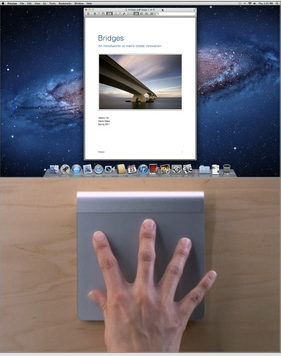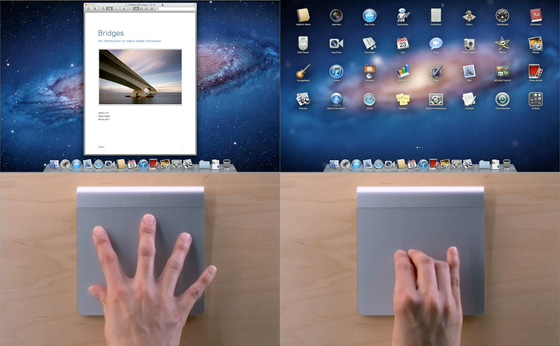OS X Lion 10.7 is the latest version of Apple’s operating system for Mac and possibly one of their most telling about the way Apple are heading. Coming just 18 months after the release of Snow Leopard, Lion brings OS X closer to the iPhone’s and iPad’s iOS operating system, making full use of Trackpads and gestures to use your Mac. The move towards iOS should be no surprise. Steve Jobs has already talked of a “Post PC World” now that Apple’s biggest revenues come from the iPhone and iPad. The risk with this strategy is that it isn’t clear that Mac users really want to move towards a more “phone-like” experience in OS X. Those that don’t may feel Lion is the first sign that OS X is gradually being “abandoned” by Apple to focus on iOS.
Firstly, before you rush to upgrade, don’t forget to check out our advice and words of caution beforehand. Some older applications simply won’t work on Lion due to Apple’s decision to drop Rosetta support. This means you will have problems running applications like Quicken 2007, Microsoft Office 2008 and other apps which supported Power PC Macs. PPC support is gone forever in Lion which will be the first bone of contention for many dedicated long-term Mac users.
According to Apple, Lion comes with more than 250 improvements and new features although many of these are minor tweaks. The biggest change however is far closer integration with iOS, the operating system of the iPhone and iPad. To take advantage of the many new finger gestures to navigate OS X however, ideally you’ll need either a MacBook Pro with Magic Trackpad or an external Trackpad (around $69) although a Magic Mouse will also suffice.
For those used to using an iPad and iPhone, the gestures will come more naturally but for others, there will be some learning to do although there are some excellent video tutorials included in the new Trackpad preferences pane:

While many will no doubt love the new way of navigating OS X, others may not want their Mac “turned into one big phone or iPad” – in which case you can always still use the mouse as normal.
The other major change in Lion is that you can only upgrade via the Mac App Store.

There’s no installation DVD as with previous versions of OS X. This obviously means that you won’t have a recovery disk if something goes wrong with Lion, but Lion creates it’s own “Recovery HD” partition which, while taking up valuable disk space, means that reinstalling should be easy enough.
The most important new features in Lion can be summarized as:
Multi-Touch Gestures:
Thanks to the MacBook Pro Touchpad, the Magic Trackpad and the Magic Mouse, you can perform actions using various finger movements. Don’t worry if you’ve never used a Trackpad or performed gestures before, Lion comes with a new Preference Pane which explains exactly how to perform various functions.

Launchpad and Mission Control:
Get a convenient overview of your open windows and applications in Mission Control which is kind of like Exposé on steroids:

You can also access/organize applications much quicker with Launchpad. This provides a more iOS like way of accessing apps as an alternative to using the Dock but unfortunately, unlike the Dock there’s no way of seeing which apps are open and which aren’t:

Full Screen Apps
All of your applications can now take advantage of full screen mode in Mac OS X Lion. This is something that Windows users have enjoyed for years and means that users can finally use their apps without any background distractions from OS X. Here’s iPhoto in full screen mode for example:

Automatic Save and Resume:
When you resume or restart your Mac, Lion will resume or recover all of your documents and windows open from the last version. In addition, your work will be saved automatically and you can go back and re-visit old saves and backups. However, it relies on the application being “Auto-Save Aware” for this function to work.

There are many other enhancements to Lion too such as the ability to backup to local drives with Time Machine and there’s a new handy migration tool for those switching from Windows to Mac. You can also now simply drag and drop files to other Macs in your vicinity or network via your Mac’s AirPort wireless connection – a nice little feature that makes working with other Mac users easier then ever.
Overall, Lion is an impressive operating system that brings the Mac closer to the iOS experience than ever before. If you’re an iPhone or iPad user that loves iOS, Lion can’t fail to impress. If you’re not however, or you rely on older PPC apps that require Rosetta support, then the appeal may not be so great but there are plenty of other features and enhancements in Lion worth checking out before you make your decision.

